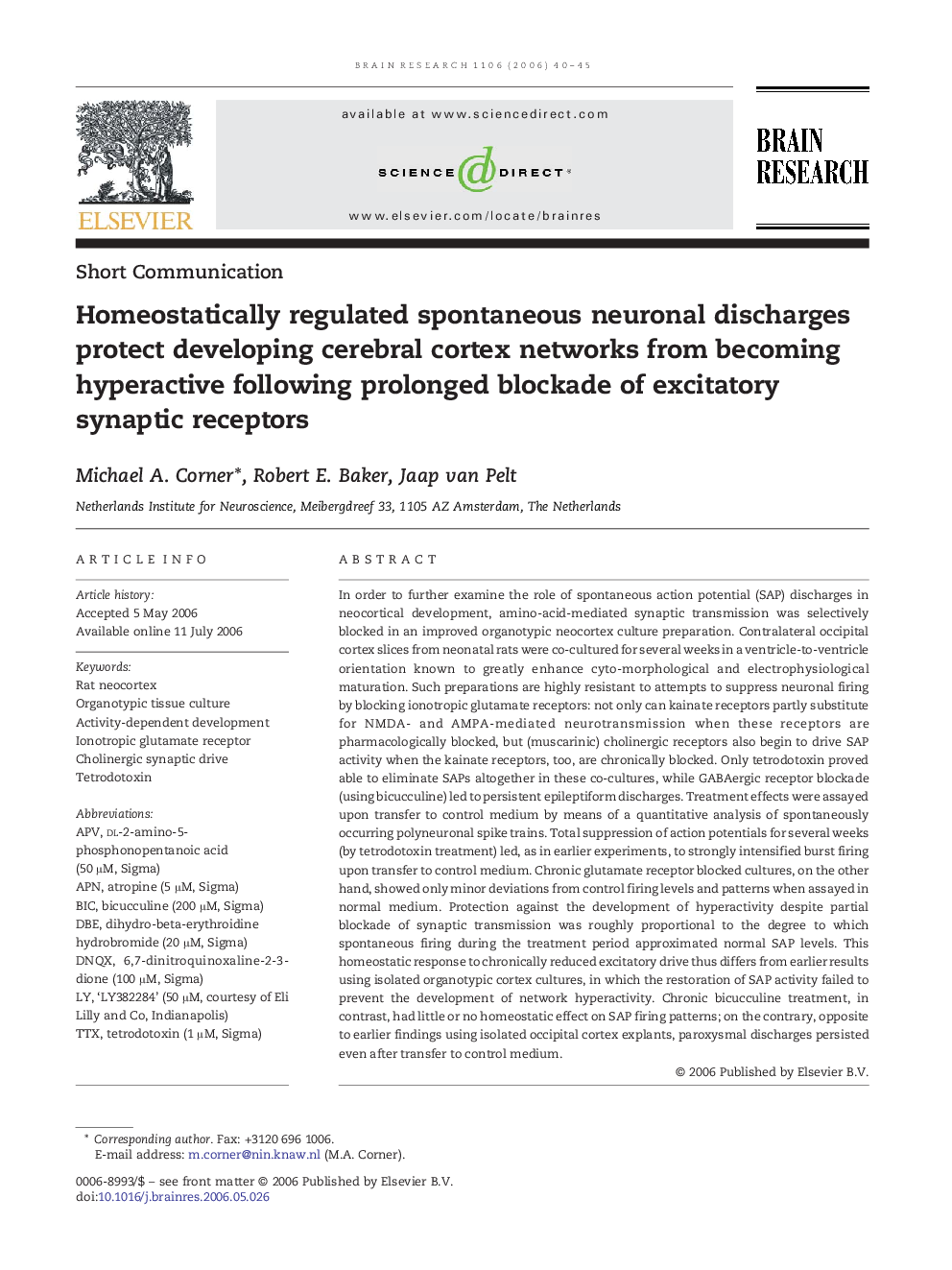| کد مقاله | کد نشریه | سال انتشار | مقاله انگلیسی | نسخه تمام متن |
|---|---|---|---|---|
| 4332529 | 1292902 | 2006 | 6 صفحه PDF | دانلود رایگان |
عنوان انگلیسی مقاله ISI
Homeostatically regulated spontaneous neuronal discharges protect developing cerebral cortex networks from becoming hyperactive following prolonged blockade of excitatory synaptic receptors
دانلود مقاله + سفارش ترجمه
دانلود مقاله ISI انگلیسی
رایگان برای ایرانیان
کلمات کلیدی
موضوعات مرتبط
علوم زیستی و بیوفناوری
علم عصب شناسی
علوم اعصاب (عمومی)
پیش نمایش صفحه اول مقاله

چکیده انگلیسی
In order to further examine the role of spontaneous action potential (SAP) discharges in neocortical development, amino-acid-mediated synaptic transmission was selectively blocked in an improved organotypic neocortex culture preparation. Contralateral occipital cortex slices from neonatal rats were co-cultured for several weeks in a ventricle-to-ventricle orientation known to greatly enhance cyto-morphological and electrophysiological maturation. Such preparations are highly resistant to attempts to suppress neuronal firing by blocking ionotropic glutamate receptors: not only can kainate receptors partly substitute for NMDA- and AMPA-mediated neurotransmission when these receptors are pharmacologically blocked, but (muscarinic) cholinergic receptors also begin to drive SAP activity when the kainate receptors, too, are chronically blocked. Only tetrodotoxin proved able to eliminate SAPs altogether in these co-cultures, while GABAergic receptor blockade (using bicucculine) led to persistent epileptiform discharges. Treatment effects were assayed upon transfer to control medium by means of a quantitative analysis of spontaneously occurring polyneuronal spike trains. Total suppression of action potentials for several weeks (by tetrodotoxin treatment) led, as in earlier experiments, to strongly intensified burst firing upon transfer to control medium. Chronic glutamate receptor blocked cultures, on the other hand, showed only minor deviations from control firing levels and patterns when assayed in normal medium. Protection against the development of hyperactivity despite partial blockade of synaptic transmission was roughly proportional to the degree to which spontaneous firing during the treatment period approximated normal SAP levels. This homeostatic response to chronically reduced excitatory drive thus differs from earlier results using isolated organotypic cortex cultures, in which the restoration of SAP activity failed to prevent the development of network hyperactivity. Chronic bicucculine treatment, in contrast, had little or no homeostatic effect on SAP firing patterns; on the contrary, opposite to earlier findings using isolated occipital cortex explants, paroxysmal discharges persisted even after transfer to control medium.
ناشر
Database: Elsevier - ScienceDirect (ساینس دایرکت)
Journal: Brain Research - Volume 1106, Issue 1, 23 August 2006, Pages 40-45
Journal: Brain Research - Volume 1106, Issue 1, 23 August 2006, Pages 40-45
نویسندگان
Michael A. Corner, Robert E. Baker, Jaap van Pelt,